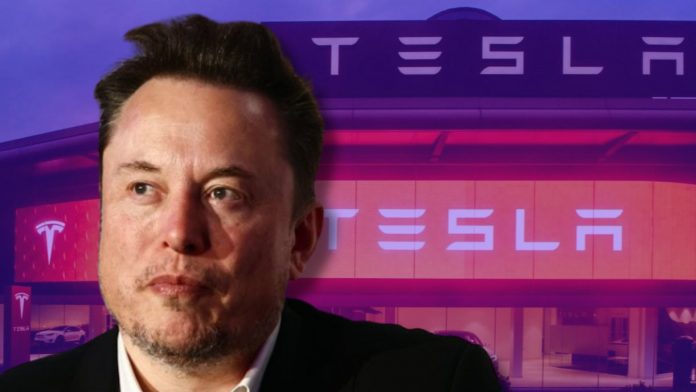Electric vehicle brand Tesla reported a steep decline in fourth-quarter profits against a 3.5% increase in revenue over the same period, missing analyst forecasts and raising questions for the new year.
From October through December, the automaker earned $25.17 billion from sales of 484,000 vehicles. The number brings its total-year revenue to $96.77 billion, up 19% but slightly behind average analyst forecasts of $97.46 billion. However, Tesla generated only $7.9 billion in net profit during the final quarter of 2023, down 40% from 2022. This dramatic decline dragged down its annual earnings by 23% during a year that saw most automakers improve profitability despite normalizing car values and stagnating demand.
The company’s earnings report highlights the impact its pricing strategy has had on not only its business but the EV market as a whole. In late 2022, Tesla began offering once-rare discounts across its entire lineup, slashing prices on some models by as much as 20% at a time. Executives promised investors this was necessary to sustain demand for battery-powered cars, which had shown signs of weakening during the last half of the year.
However, these cuts were so steep that average prices across the EV segment plunged 17.7% by the end of December 2023 according to Cox Automotive, even as other automakers refused to copy Tesla’s strategy. While the EV brand sought to spur demand with cheaper offerings, it does not appear that its plan is paying off, at least not to the extent it had expected. It is true that EV sales have risen, hitting a record 1.19 million units in 2023. However, consumer adoption is starting to stagnate, causing some brands to fall well-behind their electrification goals. And while legacy automakers are largely insulated from disruptions in the EV market due to their strong ICE businesses, companies such as Tesla, Polestar, and Rivian have little to fall back on.
In a statement to CBT News, Karl Brauer, executive analyst at iSeeCars, explained how these combined challenges place Tesla in a precarious position. “After years of capacity-constrained volume and revenue growth, it seems Tesla is facing its first demand issues,” he remarked. “The automaker has been cutting prices over the past year even as sales plateau – and the future doesn’t look bright.”
Investors seem to share this sentiment. Tesla, which saw its market valuation drop $94 billion in the first two weeks of 2024, recorded an additional $74 billion loss the day after its numbers were released.
Nevertheless, during the EV maker’s Q4 earnings call, company CEO Elon Musk expressed optimism toward 2024 as he confirmed rumors that the brand’s next-gen vehicle would be coming in 2025. “There’s lots to look forward to in 2024,” he commented. For now, Tesla appears to have taken the stance that its current challenges are temporary and will quickly disappear as time goes on and demand returns to the market. Seth Goldstein, equity strategist at financial services firm Morningstar, foresees a similar, albeit longer, path to recovery.
“In the near term, we expect deliveries to grow at just 10% and 6% in 2024 and 2025, respectively,” Goldstein told CBT News. “This is far below the 50%-plus annual growth that Tesla has generated over the past decade. However, as the company launches its affordable vehicle by the end of 2025, we expect Tesla will resume double-digit deliveries growth in 2026. As the affordable vehicle surpasses the Model 3/Y platform in deliveries, we forecast Tesla will deliver a little over 5 million vehicles by 2030.”
Tesla’s short term prospects, however, are less clear, especially in regard to its finances. In a rare display of restraint, Musk refused to clarify whether he thought profit margins would continue to drop or make a recovery in the coming months. “We don’t have a crystal ball,” he remarked. “If interest rates come down quickly, I think margins will be good, and if they don’t come down quickly, they won’t be that good.”




